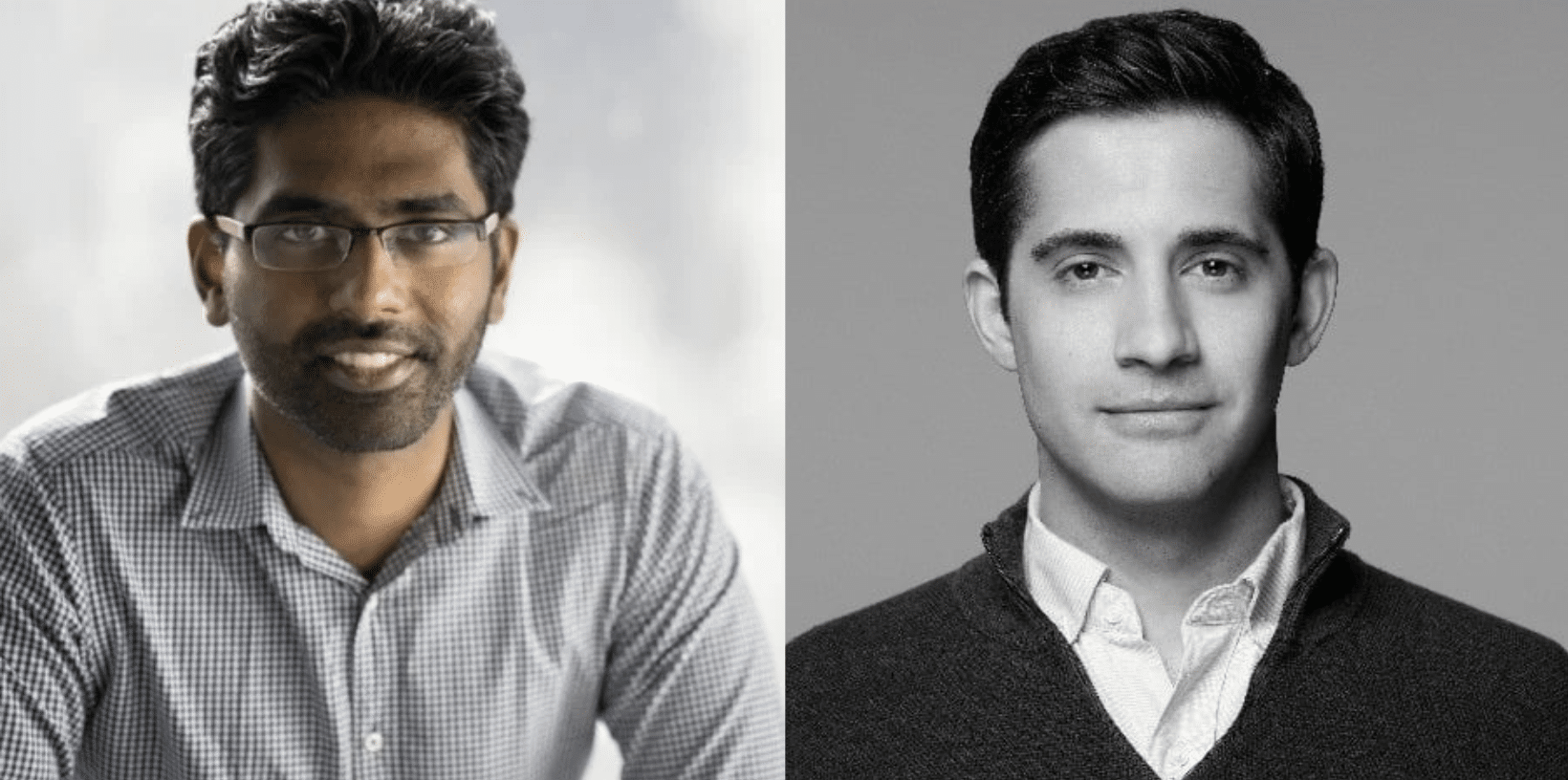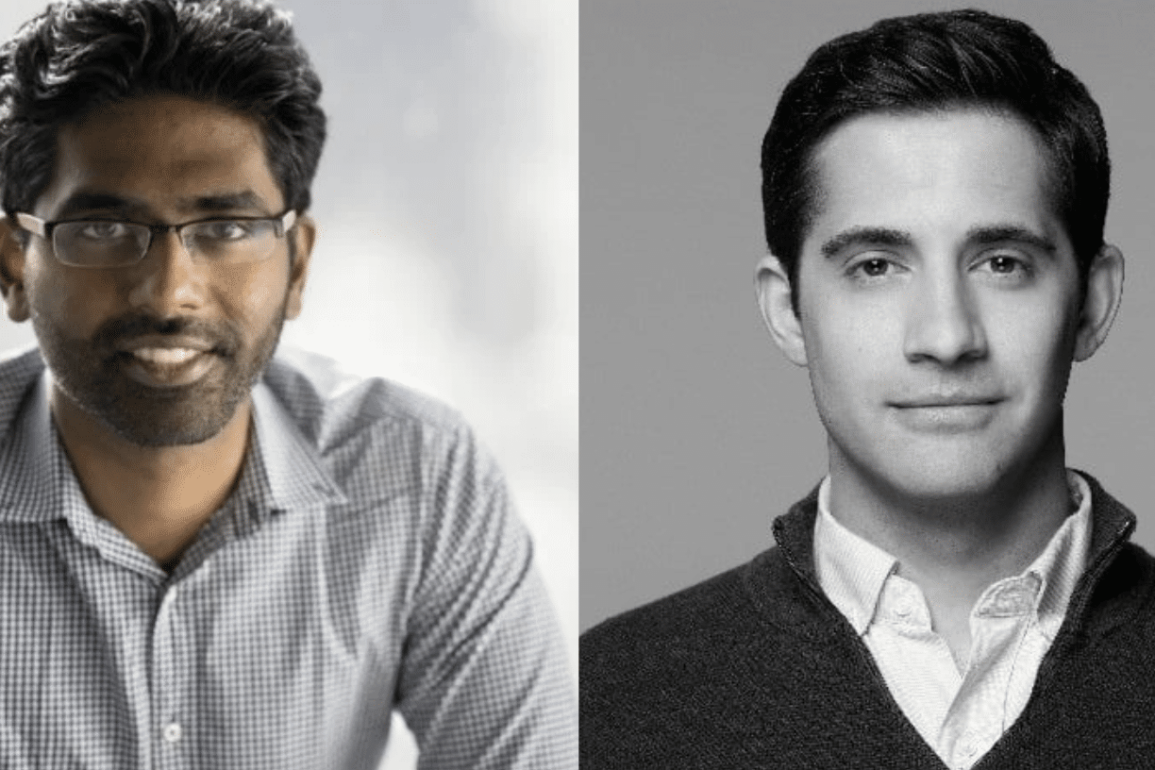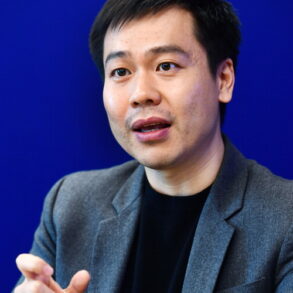
Posted May 21, 2024 at 7:05 pm EST.
Farcaster, a protocol that has the ambitious goal of successfully competing with mainstream social media giants like Facebook, TikTok, and X (formerly Twitter), announced a $150 million funding raise Tuesday. The funding will be used to help grow and retain users on the social network.
Read more: Decentralized Social Network Farcaster Raises $150 Million in a Series A Round
Dan Romero and Varun Srinivasan, the co-founders of Farcaster, were both previously at Coinbase during the centralized exchange’s hypergrowth period. Romero and Srinivasan sat down with Unchained to provide their perspective on a range of topics, including their upcoming plans to decentralize, their current view on the landscape of crypto social networks, and takeaways from their time at Coinbase.
Highlights of the interview:
- How they’re making Farcaster a place where “being a mod is not some thankless job”
- Why their “relentless focus is on keeping things super simple on the governance side”
- Why they’re focused on building a great product for users, not just decentralized infrastructure for its own sake
- Why they’re “interested in the path from 100,000 people using crypto-enabled apps to one million and then 10 million, all the way up to a billion”
Q: Decentralized channels for Farcaster are on the horizon. Tell us more about that.
Dan Romero: We believe in allowing channel creators to choose whether or not a community has some type of economic model, whether that’s a subscription or requiring users to buy a specific asset to get access. That flexibility is going to lead to higher quality outcomes because now, being a mod is not some thankless job to make high-quality content and not get paid effectively.
That is the pitch for channels. It’s similar to a subreddit, but you as the creator own that channel, and then have the flexibility to moderate it and potentially add economics in whatever way you see fit.
Question: What is the difference between channels right now and the decentralized channels in the works?
Dan Romero: Right now channels are centrally administered. They exist in the Warpcast database. The content, the casts, those are on the protocol, so those are completely permissionless, but the metadata for channels and the ability to do the curation are not part of the protocol. They only exist within Warpcast.
Varun Srinivasan: If you create and set up a [decentralized] channel, then all your data, all your everything – from your channel icon to your feed – works across multiple different clients. All of that data is decentralized in a way that anyone building an app can show you the same version of the channel.
[And] you actually have control over your channel, meaning if you want to give ownership of it to a friend, [you can]. Or let’s say after you built up a following, you want to sell it to someone. You have the freedom to do that.
Read More: Farcaster Wants to Win Over Crypto. Here’s How It’s Different From ‘Crypto Twitter’
Question: How much of your mindshare is dedicated to decentralized governance on Farcaster?
Varun Srinivasan: We have a decentralized governance model that works really well. It’s called rough consensus and running code. . . it is what the IETF uses to create all the web standards around TCP-IP and so on. The reason it’s so powerful is that there is no formal ossified structure. It’s very simple: if you can build something useful and convince the majority of people that it’s useful, you can ship it.
There are people who run Farcaster Hubs – these are the nodes in the network that store the data. There are people who build applications that talk to hubs to pull the data out and generate it. And there are users who use these applications. Every one of these groups is a check and balance against the other groups. . . . you have to ship something that the majority of these three groups think is a good idea.
If you don’t, all of them have the ability to vote with their feet. Hub operators can run an older version of the hub. Apps can choose different hubs. Users can choose different apps. That ends up being the check and balance against someone pushing through something that’s against the network’s broader interest.
Dan Romero: For now, the relentless focus is on keeping things super simple on the governance side, and increasing the total number of daily active users, and then shipping actually useful development. We could spend a ton of time coming up with complex and convoluted governance structures, but it doesn’t help us with our goal.
Question: What has been the most surprising element in the journey from Coinbase, a centralized exchange, to building a decentralized social network?
Dan Romero: What’s more sticky than I [initially] believed is the network effect of Twitter, despite all of the hand-wringing about the death of Twitter post-Elon. We went to market in 2021, and we thought, ‘Okay, you’re into crypto talking a lot about decentralization, talking a lot about needing other apps in the ecosystem.”
And I think naively, we thought, ‘Okay, great, there are going to be a bunch of people who actually want to go play with something new.’ And it turns out that [they would] rather continue using the existing thing. It’s really on us to deliver a product that people find genuinely useful. That has shifted our perspective over the last few years … ultimately, the only way we win is not because of the architecture. It’s very much building a product that people love.
Varun Srinivasan: I think when we started we had this mental model that we would be spending equal amounts of time courting users and developers. We very quickly realized that building apps and social is really, really hard. Like we’ve spent probably 20 person-years of time just building the Warpcast [Farcaster client] app, and it was unrealistic to expect some other teams to show up on day one and decide to spend 100% of their time building up Farcaster when there are no users.
As long as we attract users to Farcaster by building clients, telling the story, getting people onboard, that makes the app more and more valuable to developers every day, and that’s the single most useful thing. It’s not like, build this SDK for me or build this toolchain or add this feature. It’s just, can you 10x the number of people on this product? That’s been the biggest shift in our mindset since the early days.
Question: You’ve talked about how Coinbase made onboarding and user experience super easy. What did you learn from Coinbase that you use to navigate the direction of Farcaster?
Dan Romero: A big belief that I have from my experience at Coinbase is that the average person doesn’t care about all the things you’re building. They just want an app that works, which starts with onboarding. Actually it even starts before: How do you position the product and explain it to them?
We can do a better job with this. The Farcaster vs. Warpcast issue is confusing for people. It’s not even that we’re competing with fintech apps. We have to compete with the best in the world among social media apps.
Then, once you’re in the app, is it interesting enough for me to come back? A lot of people in crypto like to hold themselves accountable to other crypto apps, when the reality is like that if your app isn’t that interesting, they’re going to flip back over to TikTok or YouTube.
Varun Srinivasan: The other thing I learned from Brian [Armstrong] is to always be focused on building what people want no matter what’s happening in the meta. He says it’s never as good as it seems and never as bad as it seems. The one reason Coinbase has been successful is no matter what was happening, whether the market was in the trough of despair or the peak of euphoria, Coinbase always kept shipping and building. Spending multiple cycles in crypto and seeing that strategy play out, we know that long-term focus actually wins.
Question: The social media crypto ecosystem has several players – namely, Farcaster, Lens, Nostr, Friend.Tech. What is Farcaster’s view on the current landscape?
Dan Romero: None of crypto matters in terms of the total number of users relative to centralized social media like Facebook, which has billions of users. We’re talking about tens of thousands of users across all of decentralized social media [combined], and maybe 100,000 using crypto every day—and they’re probably the same set of people.
We’re interested in the path from 100,000 people using crypto-enabled apps to one million and then 10 million, all the way up to a billion. I don’t think it’s useful focusing on competitors. It’s just: What do people want? What do people find entertaining?
If you can get users to show up every day because they find the content interesting and entertaining, then the developers follow. Anything else, any other focus, doesn’t matter.
Varun Srinivasan: Our competitors have all taken a slightly different path. Our bet very specifically is: to build within crypto, and create a place where people can create communities they own and where developers can build apps for those people.
Read More: Farcaster’s User Base Skyrockets Nearly 500% After Frames Launch
This post was originally published on this site be sure to check out more of their content








